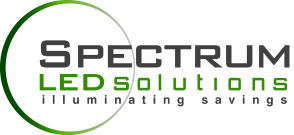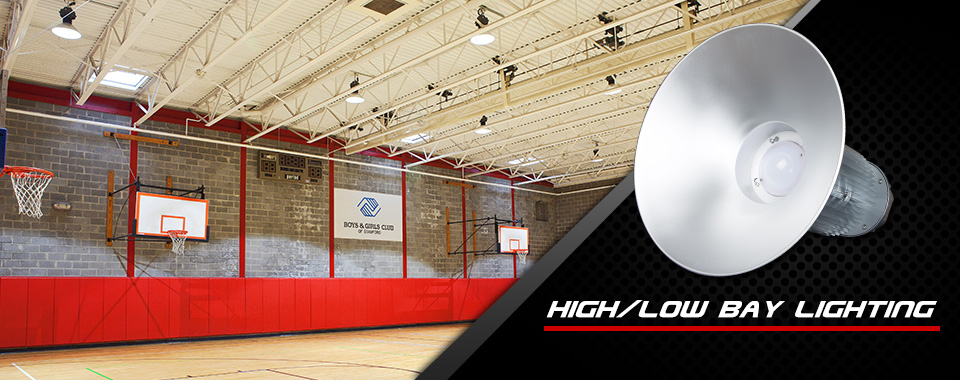Instant-on and reduced maintenance big sells for LED in Hi Bay
By Kevin Dahlen, Director, Design and Development Kenall Lighting
High-bay lighting is the most common type of lighting used in commercial facilities that have high ceilings and require high foot-candle levels. They are ideally suited for large spaces with mounting heights between 15 and 40 ft., and ambient temperatures between -4°F and 131°F. While high-bay lights have traditionally used high intensity discharge (HID), metal halide (MH) or fluorescent lamps, many specifiers and facility managers are changing to LED luminaires.
Properly designed and engineered LED-based high-bay luminaires can offer big advantages for commercial applications. However, it’s important to consider LED luminaires that take a systems-level approach that includes driver design and thermal management, rather than just retrofitting LED “bulbs” into existing fixtures.
LED Lamp Life
Correctly designed LED will not fail catastrophically, but rather slowly dim. LED luminaires are determined to have “failed” when light output reaches 70% of original output. In fact, well designed fixtures can last over 50,000 hours making non-scheduled equipment downtime due to lamp failure nonexistent.
How long is 50,000 hours? Based on the length a fixture is illuminated per day, here is what a 50,000 lifetime translates into on an annual basis:
Hours of Operation: 50,000 hours is:
24 hours a day – 5.7 years
18 hours per day – 7.5 years
12 hours per day – 11.4 years
8 hours per day – 17.1 years
With LED luminaires, maintenance costs are minimized as relamping may not be required during usable lifetime of the product. Another important consideration given that high bays are ceiling-mounted and may need the use of a lift to change out the burned fixture.
LED Illumination – Ready for Prime Time
Debate continues about whether LEDs have the output in lumens. Through advancements in technology and manufacturing, bright white LED luminaires for commercial lighting applications are in the market. Recent legislation in the United States has led to the phase-out of mercury vapor ballasts and lamps as well as 150 to 500 watt MH luminaires. LED technology fills these needs, while far exceeding government mandated efficiency standards.
An LED luminaire incorporates an array of point sources that direct light precisely where it’s needed, with very little scattering or loss. Light distribution is controlled by the placement of LEDs, as well as by efficient use of optics.
Since traditional lamps are high-intensity near-point sources, the optical design for these luminaires causes the area directly below the luminaire to have a much higher illuminance than areas farther away from the luminaire. In contrast, the smaller, multiple point-source and directional characteristics of LEDs can allow better control of the distribution, with a resulting visible improvement in uniformity.
LED luminaires use different optics than traditional lamps because each LED is an individual point source. Effective luminaire design exploiting the directional nature of LED light emission can translate to lower optical losses, and higher luminaire efficacy. Consider of a couple of spaces that could benefit from LED:
Warehouse Lighting
Here’s where LED luminaires’ dramatic energy efficiency really makes an impact. Typically, lighting is viewed as a fixed expense, but it shouldn’t be; energy costs can be dramatically reduced – up to 75%– and maintenance can be virtually eliminated through the installation of LED luminaires. Additionally, paired with occupancy sensors and/or dimmable components they provide even greater energy efficiency.
Further power savings are achieved from turning off the fixtures when not in use. Workers often leave the traditional lights on continuously because they take so long to warm up to full brightness. LED luminaires light immediately, eliminating the need to have them on all the time.
Many LED retrofit installations don’t require a one-to-one replacement so the combination of using fewer fixtures for shorter periods of time provides a lower energy bill and significantly reduced maintenance expense.
Cold Storage
Conventional lighting and refrigeration systems typically work against each other. Lighting systems generate heat, which the refrigeration system needs to remove. In addition, lower temperatures typically reduce the efficacy of lighting systems. Therefore, more power is required to generate the desired illumination, which in turn, increases the load on the refrigeration system.
Facilities can save tens of thousands of dollars in yearly electric costs, and cut harmful emissions by thousands of tons by implementing a handful of simple, cost-effective efficiency measures to reduce electrical consumption and have a payback period of three years or less such as installing LED luminaires.
Only certain technologies, such as LED luminaires, are capable of functioning for cold storage needs at temperatures that range from zero degrees to -40°C.

